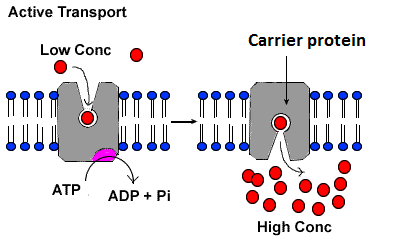Question #bc898
1 Answer
Active transport is movement of ions & molecules against their concentration or electrochemical gradient i.e from lower concentration to the higher one.
Explanation:
As it would be bit tricky for the molecules & ions to escape from the area where they are in lower concentration and to get in the one with higher concentration. So, they definitely would need energy
Active transport basically require two things

One of the best example of active transport is sodium-potassium pump that takes place in plasma membranes of all animal cells.
Video below gives an amazing elucidation of
Other examples are:
-
In small intestine, glucose is absorbed by active transport into villi so that it get it's way into blood stream and can be taken around the body.
-
Proximal convoluted tubule of nephron reabsorbs all the useful molecules i.e glucose, amino acids and salts via active transport.
-
Calcium pump use active transport etc...
Active transport has two types:
-
Primary active transport
#to# obtain energy directly as a result of breakdown of#ATP# . -
Secondary active transport
#to# obtain energy from concentration gradient of driving ions and also from primary active transport.
Hope it helps...

